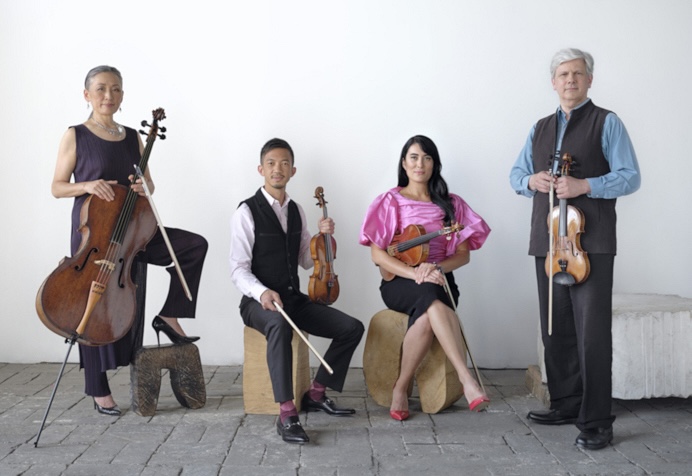
Sunday, November 12, 3:00 pm, Sweeney Concert Hall
Old friends from Boston, still one of America’s most consistently probing and interesting chamber ensembles. Bach from the Well-Tempered Clavier, Jamaican composer Eleanor Alberga’s “Remember,” Bartók’s Quartet No. 6, and the Beethoven Quartet in E-flat Major, Op. 127
Taken from Borromeo’s website:
Each visionary performance of the award-winning Borromeo String Quartet strengthens and deepens its reputation as one of the most important ensembles of our time. Admired and sought after for both its fresh interpretations of the classical music canon and its championing of works by 20th and 21st century composers, the ensemble has been hailed for its “edge-of-the- seat performances,” by the Boston Globe, which called it “simply the best.”
Inspiring audiences for more than 25 years, the Borromeo continues to be a pioneer in its use of technology, and has the trailblazing distinction of being the first string quartet to utilize laptop computers on the concert stage. Reading music this way helps push artistic boundaries, allowing the artists to perform solely from 4-part scores and composers’ manuscripts, a revealing and metamorphic experience which these dedicated musicians now teach to students around the world. As the New York Times noted, “The digital tide washing over society is lapping at the shores of classical music. The Borromeo players have embraced it in their daily musical lives like no other major chamber music group.” Moreover, the Quartet often leads discussions enhanced by projections of handwritten manuscripts, investigating with the audience the creative process of the composer. And in 2003 the Borromeo became the first classical ensemble to make its own live concert recordings and videos, distributing them for many years to audiences through its Living Archive, a music learning web portal for which a new version will soon be released.
Passionate educators, the Borromeos encourage audiences of all ages to explore and listen to both traditional and contemporary repertoire in new ways. The ensemble uses multi-media tools such as video projection to share the often surprising creative process behind some works, or to show graphically the elaborate architecture behind others. This produces delightfully refreshing viewpoints and has been a springboard for its acclaimed young people’s programs. One such program is MATHEMUSICA which delves into the numerical relationships that under-pin the sounds of music and show how musical syntax mirrors natural forms. CLASSIC VIDEO uses one movement of a quartet as the platform from which to teach computer drawing, video editing, animation, musical form and production processes to create a meaningful joining of music and visual art. Read more on their website.